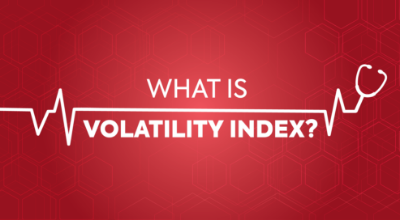As you might be aware, the normal heart rate for humans ranges from 60 to 100 beats per minute. A beat per minute (bpm) rate below or above this normal range may indicate an unhealthy heart and suggests medical attention. Now you might be like, why are we discussing this bpm here & what it has to do with the stock market? Okay, Let, me tell you that this has nothing to do with that open F&O position of yours, which sometimes gets your heart rushing.
We are Today going to talk about the VIX i.e. Volatility Index. The volatility index is like the heartbeat of the stock exchange. Similar to our heartbeat, when VIX is out of its normal range, it suggests lower or higher than normal volatility in the market. Let’s understand this VIX in a bit more detail.
What is VIX?
Being a measure of volatility, VIX is often called the “Fear Index” or “Fear Guage”. The Chicago Board of Options Exchange (CBOE) first launched the Volatility Index (VIX) for the US markets in the year 1993. VIX was launched in India in the year 2008 by the National Stock Exchange (NSE).
The Volatility Index is widely used to measure the expected market movement in the coming 30 days. Though VIX is an annualized rate, we first divide it by the square root of 12 (12 stands for 12 months). E.g.: - At the time of writing this blog, the India VIX is 13.4775 which means that the NIFTY Index is expected to move 13.4775% in the coming year. Thus, 3.89% (13.4775 / √12) gives us the expected monthly movement.
Though, VIX tells us the expected movement in the index, it does not indicate the direction of the movement. Therefore, though we can say that the expected movement is 3.89%, this movement can be 3.89% up or 3.89% down.
I am sure that you are wondering how is this VIX value calculated. Well, there is a mathematical formula behind the calculation of VIX, but honestly, there is no need to understand this formula as VIX is readily available on google or any other trading platforms. The interpretation of VIX is more important rather than its calculation. We will understand it in the next part of the blog, till then do visit my YouTube channel CA Rachana Phadke Ranade and for all the Marathi folks out there also visit my Marathi YouTube channel CA Rachana Ranade (Marathi).
Interpretation of VIX
As we said, the VIX indicates the expected movement in the market. It helps us know the expected performance in the market for a definite period say 1 month, 1 year, etc. Volatility implies the tendency to change. Hence, when the markets are highly volatile (high VIX), they tend to move steeply up or down. But, what do we exactly mean when we say that the VIX is high? Generally, the following categorizations are followed:
VIX below 11: - Very Low.
VIX within the range of 11-20: - Stable.
VIX above 20: - Very High.
VIX in the “Very Low” category and “Very High” category indicates unusual volatility in the market. But again, we cannot predict the direction. Hence, if say the VIX is high, the market can be very bullish or very bearish in this phase. On the other hand, a VIX in the “Stable” category indicates a stable or gradual movement in the market.
The VIX is a very good indicator of the mood of the market. But it is not a sole indicator and hence needs to be used in combination with other indicators like the open interest, put-call ratio, etc. But what are the other indicators and how to calculate them? Don’t worry! I have covered all these indicators and many more interesting concepts in my course on Futures and Options. Until next time!



